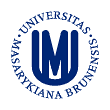Physiological developement of an embryo and fetus, growth and changes of the
external shape
- 1st lunar month
- Presomite stage of development: fertilized oocyte quickly
develops into a blastocyst, in which the embryo itself is represented by
embryoblast, which will soon turn into an embryonic disc.
The disc becomes oval and from the end of the 3rd week it begins to bend
in the craniocaudal and also dorsoventral axis and finally becomes the
cylindrical embryo body. The somite stage of development follows.
The embryo is bent, it has the shape of the letter C, the
convexity is dorsal. In a very large
head part, there is the forebrain with a
frontal prominence, then (dorsally from from the forebrain) midbrain (mesencefalon) with a dorsal curve
(flexura cephalica). Another bend forms flexura
occipitalis in the hindbrain region. On the
concave dorsal side of the embryo body somites are plainly visible.
Caudal end of the embryo body is also ventrally bent and ends with a tail.
On the ventral side of the body there are the heart and liver prominences.
Face and limb prominences begin to form (the limbs resemble tiny fins).
At the end of the first lunar month, the body is cca 4 mm long.
- 2nd lunar month
- Development of the facial structures continues — eyes, ears and
nose are formed. The body begins to straighten and the head rounds out.
In the brain the 4th ventricle is formed. The tail is shorter.
Limbs continue to develop, fingers become separate.
The neck begins to form and also the insertion of the umbilical cord narrows.
The genitalia prominence is being formed. Slowly embryo gains human features
and becomes distinguishable from embryos of other mammals.
The crown to rump length at the end of the 2nd month is approximately 28 mm.
At this stage, terminology changes and the embryo becomes fetus.
- 3rd lunar month
- The fetus continues to grow quickly, most of the internal organs are in their final positions.
Its trunk lengthens, but the head still remains rather large compared to the rest of the body (the
head is approx. 1/3 of body length).
External genitalias are completely developed and gender can be told.
Body length at the end of the 2nd month is cca 90 mm, C-R length cca 70 mm.
The fetus weights approximately 20 g.
- 4th lunar month
- Rapid growth continues, nails begin to appear and skin is covered with first (very fine) hair (lanugo).
The body is about 150 mm long, C-R length is cca 130 mm, weight is approx. 120 g.
- 5th lunar month
- Growth slows down, the head becomes smaller compared to the rest of the body.
The fetus is covered with lanugo, vernix caseosa is produced. The fetus moves
and its mother begins to feel its movement — primigravida around 19th w.g., multigravida
aprox. 2 weeks earlier. Heartbeat can be detected with a stetoscope. Body
length at the end of the month is cca 250 mm, C-R is cca 180 mm, weight is approximately 300 g
- 6th lunar mmonth
- Because there is no subcutaneous fat, the skin is soft, transparent,
purple-red with blood vessels clearly visible.
The head is covered with short hair, eye lashes and eyebrows begin to grow.
Body length at the end of the month is cca 300 mm, C-R is cca 230 mm, weight is approximately
600 g.
- 7th lunar month
- Subcutaneous fat begins to form, skin stretches
Eyes open; epitelial suture between eyelids reopens. Testes begin to descend into the scrotal pouch.
Body length is cca 350 mm, C-R is cca 270 mm, weight approximately 1200 g.
- 8th lunar month
- The ammount of subcutaneus fat increases, the fetus is plump, pink with hair on its head,
nails reach to the ends of fingertips. There is plenty of vernix caseosa on the body surface.
Body length is cca 400 mm, C-R is cca 310 mm, the fetus weights approximately 1800 g.
- 9th lunar month
- Changes which began in the 8th lunar month continue. Descend of testes is finished.
Body length is cca 450 mm, C-R is cca
340 mm, weight is approximately 2600 g.
- 10th lunar month
- By this time a full-term baby is ready to be born: its body is plump, skin is smooth without
lanugo. Nails reach over the ends of fingertips, hair is at least 10 mm long.
Bones on the head are hard, cartilage is firm and fontanels are palpable.
Perimeter of the chest is slightly larger than perimeter of the head.
Body length is approximately 500 mm, C-R length is approximately
360 mm, average weight is 3300 g. These signs are evaluated by a neonatologist
right after the delivery.
Pictures
Normal 7-week fetus:
 Fetus, 7-week, Macro, autopsy (73329)
Fetus, 7-week, Macro, autopsy (73329)
 Fetus, 7-week, Macro, autopsy (73330)
Fetus, 7-week, Macro, autopsy (73330)
Normal 10-week fetus:
 Fetus, 10-week, Macro, autopsy (73325)
Fetus, 10-week, Macro, autopsy (73325)
 Fetus, 10-week, Macro, autopsy (73326)
Fetus, 10-week, Macro, autopsy (73326)
 Fetus, 10-week, Macro, autopsy (73327)
Fetus, 10-week, Macro, autopsy (73327)
 Fetus, 10-week, Macro, autopsy (73328)
Fetus, 10-week, Macro, autopsy (73328)
Normal 14-week fetus:
 Fetus, normal, 14-week, Macro, autopsy (73645)
Fetus, normal, 14-week, Macro, autopsy (73645)
 Fetus, normal, 14-week, Macro, autopsy (73646)
Fetus, normal, 14-week, Macro, autopsy (73646)
Normal 15-week fetus:
 Normal fetus, 15 w.g., Macro, autopsy (73053)
Normal fetus, 15 w.g., Macro, autopsy (73053)
Normal 15-week fetus:
 Normal fetus, 15-week, Macro, autopsy (73697)
Normal fetus, 15-week, Macro, autopsy (73697)
 Normal fetus, 15-week, Macro, autopsy (73698)
Normal fetus, 15-week, Macro, autopsy (73698)
Normal 16-week fetus:
 Normal fetus, 16 w.g., Macro, autopsy (73054)
Normal fetus, 16 w.g., Macro, autopsy (73054)
 Normal fetus, 16 w.g., Macro, autopsy (73055)
Normal fetus, 16 w.g., Macro, autopsy (73055)
Normal 17-week fetus:
 Normal fetus, 17th week of pregnancy, Macro, autopsy (72075)
Normal fetus, 17th week of pregnancy, Macro, autopsy (72075)
 Normal fetus, 17th week of pregnancy, Macro, autopsy (72076)
Normal fetus, 17th week of pregnancy, Macro, autopsy (72076)
 Normal fetus, 17th week of pregnancy, Macro, autopsy (72077)
Normal fetus, 17th week of pregnancy, Macro, autopsy (72077)
 Normal fetus, 17th week of pregnancy, Macro, autopsy (72078)
Normal fetus, 17th week of pregnancy, Macro, autopsy (72078)
Normal 18-week fetus:
 Normal fetus, 18-week, Macro, autopsy (73699)
Normal fetus, 18-week, Macro, autopsy (73699)
 Normal fetus, 18-week, Macro, autopsy (73700)
Normal fetus, 18-week, Macro, autopsy (73700)
Normal 17-week fetus:
 Normal fetus, 17 w.g., Macro, autopsy (73056)
Normal fetus, 17 w.g., Macro, autopsy (73056)
Normal 19-week fetus:
 Normal fetus, 19 w.g., Macro, autopsy (73057)
Normal fetus, 19 w.g., Macro, autopsy (73057)
Normal 19-week fetus:
 Normal fetus, 19-week, Macro, autopsy (73701)
Normal fetus, 19-week, Macro, autopsy (73701)
 Normal fetus, 19-week, Macro, autopsy (73702)
Normal fetus, 19-week, Macro, autopsy (73702)
 Normal fetus, 19-week, Macro, autopsy (73703)
Normal fetus, 19-week, Macro, autopsy (73703)
 Normal fetus, 19-week, Macro, autopsy (73704)
Normal fetus, 19-week, Macro, autopsy (73704)
Normal 21-week fetus:
 Normal fetus, 21 w.g., Macro, autopsy (73058)
Normal fetus, 21 w.g., Macro, autopsy (73058)
Normal 22-week fetus:
 Normal fetus, 22-week, Macro, autopsy (73705)
Normal fetus, 22-week, Macro, autopsy (73705)
 Normal fetus, 22-week, Macro, autopsy (73706)
Normal fetus, 22-week, Macro, autopsy (73706)
Normal 24-week fetus:
 Fetus, 24 week, Macro, autopsy (73998)
Fetus, 24 week, Macro, autopsy (73998)
Normal 25-week fetus:
 Normal fetus, 25 w.g., Macro, autopsy (73059)
Normal fetus, 25 w.g., Macro, autopsy (73059)
Normální plod, 25. týden gravidity:
 Fetus, 28 week, Macro, autopsy (73999)
Fetus, 28 week, Macro, autopsy (73999)
Histology
Tissues in various stages of embryonal development.
Pictures
Normal myocardium, 20-week fetus:
 Fetus, 20th week, myocardium, HE 40x (72612)
Fetus, 20th week, myocardium, HE 40x (72612)
Normal brain, radial glia, developing cortex, 20-week fetus:
 Fetus, 20th week, periventricular area, HE 40x (72611)
Fetus, 20th week, periventricular area, HE 40x (72611)
Normal lung, canallicular, (with focal adnate pneumonia), 20-week fetus:
 Fetus, 20th week, lung, pneumonia, HE 40x (72613)
Fetus, 20th week, lung, pneumonia, HE 40x (72613)
 Fetus, 20th week, lung, pneumonia, HE 40x (72614)
Fetus, 20th week, lung, pneumonia, HE 40x (72614)
Extramedullar hemopoesis, fetus, 20-week, spleen:
 Spleen, fetus, 20th week of gravidity, HE 40x (72553)
Spleen, fetus, 20th week of gravidity, HE 40x (72553)
Normal kidney, fetus, 20-week:
 Normal fetal kidney, HE 40x (72658)
Normal fetal kidney, HE 40x (72658)
Ovary with follicular cyst:
 Follicular cyst, ovary, newborn, HE 40x (72884)
Follicular cyst, ovary, newborn, HE 40x (72884)



 Fetus, 7-week, Macro, autopsy (73329)
Fetus, 7-week, Macro, autopsy (73329)